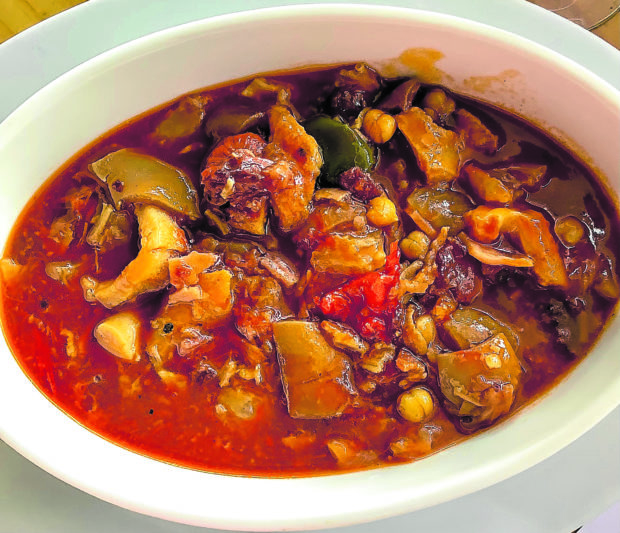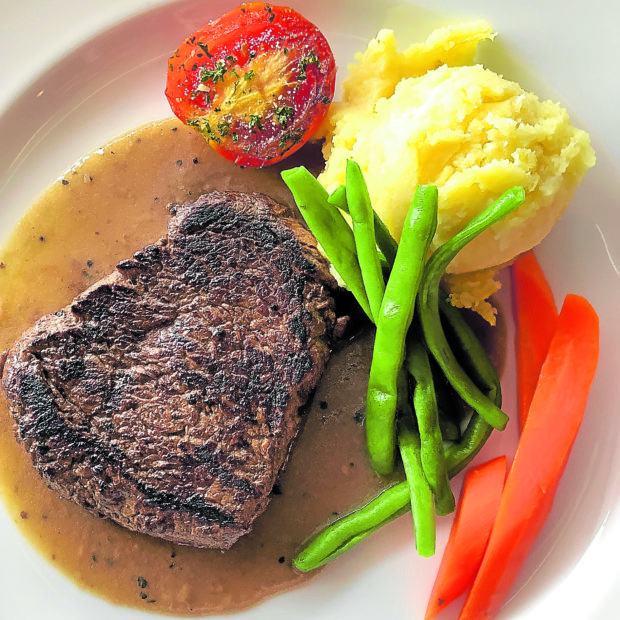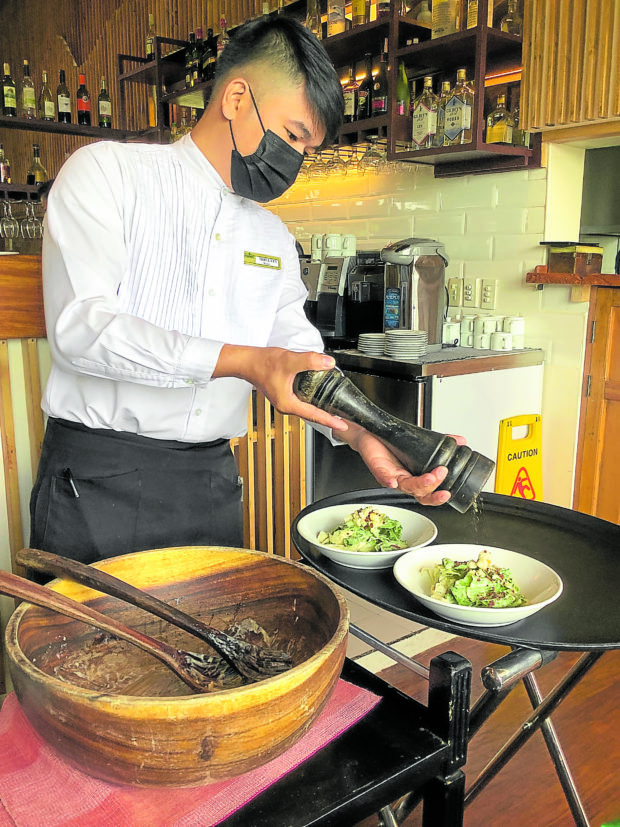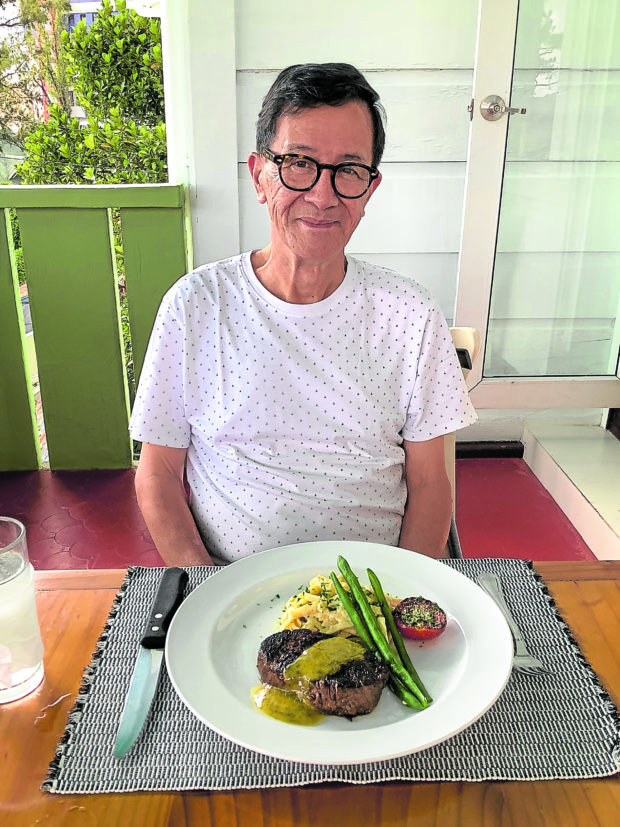
My family and I are longtime customers of Mario’s in Baguio City. Milestones like birthdays, Mother’s and Father’s Days, the children’s graduation and wedding anniversaries would always end with a rich repast on one of the restaurant’s tables. The old hand Bobby always politely greeted me and my husband with a “Hello, Sir Rolly, Ma’am Elizabeth. Welcome back” or “Long time no see.”
It’s those little touches that keep pulling us back, apart from the comfort we seek from a bowl of callos or a platter of lengua estofado, dishes that I never could replicate at home even if I could find the right cuts of meat, especially tongue and tripe. The Caesar salad, we always split between us. I never departed from the callos Madrileña; it was a toss between a steak (cooked medium well) or lengua for Rolly.
One September day this year, as he and I were declared fit and healthy by our endocrinologist after a two-hour wait that stretched past lunchtime, I had a sudden craving for callos to celebrate the return of my uric acid to a normal level.
Initial fear
When we reached the old location of Mario’s on Upper Session Road, we found it dark, the chafing dishes and the paintings on the floor. My initial fear was that they were folding up, another economic victim of the pandemic. One of the old waiters assured us they were just moving down the road, 200 meters away.
And down Loakan Road, at building No. 8, the restaurant and all that was once inside it have moved to an airier and brighter space with a balcony that faces a panoramic view of trees. There we met up with owner Fil Benitez of the Benitez clan, more known for their imprint on education.
In his family, his mother Nenuca was the certified foodie along with his paternal grandmother Rosenda, whom he described as “a very good cook.” There was also entertainment figure Leila Benitez of “Student Canteen” fame (a daily noontime show in the ’60s for the non-Baby Boomers out there) who put up the Leila’s Café beside the then Rizal Theater (an iconic structure in Boomers’ memories).

Fil remembered his dad as saying in Spanish, “There’s no place to eat in Baguio, except Chinese restaurants.” His parents loved to entertain so inevitably a small restaurant on central Session Road opened on Sept. 1, 1971. The elder Benitez was like Henry Sy in his belief that “you put a business where people can put their disposable income.”
Booming business
The premartial-law Mario’s just offered steak for P28 and Coke for five centavos. Fil said rent cost P450 a month, and he still has the receipt for that. Business boomed during the martial law years for which Fil “thanked” Marcos’ travel ban and curfew.
Manila’s 400 couldn’t fly to Hong Kong or other parts of the world, but the Tuason, Madrigal, Legarda and Araneta families had homes in Baguio. There were no Boracay or Palawan resorts yet to provide them an option. But once in Baguio, where were they to go next after they had eaten at the then Rice Bowl (which later became Rose Bowl) where the best Chinese cuisine could be had?
When the second branch of Mario’s opened on Makati Avenue in Makati, the restaurant’s name was already familiar to the Manila vacationists because they had patronized it in Baguio. A third branch opened on the former Sampaloc Avenue (now Tomas Morato Avenue) in Quezon City, making it the third on that street after Alfredo’s and Luigi’s. There was a fourth Mario’s at Ortigas Center behind SM Megamall.
Now Mario’s is down to two—in Baguio and QC.
The 50-year-old restaurant in the highland lays claim to being the first fine-dining place outside Baguio Country Club. It opened to meet “more of a need and without a feasibility study,” Fil said.

He grew up on everyday food that is also served at Mario’s. His parents raised their four children to use a knife and a fork; the spoon was only for soup, Nenuca decreed. His maternal grandfather also called the table la mesa de dios (God’s table). Thus, you cannot eat wearing a kamiseta or even a tie-dyed T-shirt (as Fil once tried to do). That lolo appeared for meals wearing a jacket.
The elders set the standard high for fine dining so that Fil had to read the Amy Vanderbilt book on etiquette. His own three children grew up that way, too.
Dignity of labor
When his child would ask him about these rules, he would answer back, “What if you’re invited to Malacañang for a vin d’honneur? How are you going to eat?”
Another thing Fil learned from his father Mario was “the dignity of labor,” a phrase the older man used on his kids when they were small. They found the idea abstract until they were made to work Friday and Saturday nights. The son recalled, “While our classmates went to parties or played in combos, we worked as cashier or waiters.”
In the back burner is a book compiling Nenuca’s collection of recipes which they found on hundreds of file or index cards. This will be coauthored by Adelaida Lim, Fil’s sister Mitos B. Yñiguez and Fil.

One afternoon chatting with Fil about the Baguio of old is not enough. On his bucket list, and considering he is a cancer survivor and a diabetic, is a plan to walk from the edge of La Trinidad to Sagada, Mountain Province, a distance of 150 kilometers, “even if it takes me eight days, that’s still OK. I’ll just bring my camera. A van with my driver will follow me so I can sleep at night.”
The longest he has walked is 14 km from Mario’s new location to Loakan Airport. His surviving his bout with cancer has humbled him deeply to the extent that he would like this one word to be placed on his grave: Gratitude. —CONTRIBUTED INQ








































